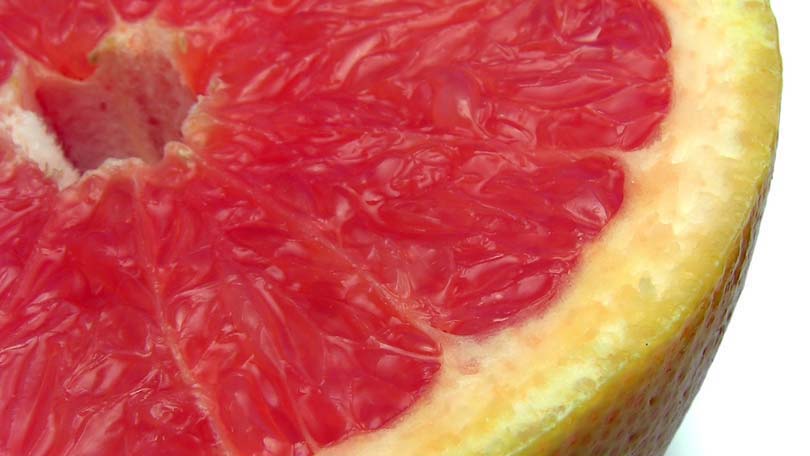It’s hard to believe that the grapefruit – a regularly featured item on many breakfast tables – has not always enjoyed popularity. In fact, the grapefruit as we know it today differs quite a bit from its predecessors.
Actually a hybrid of the orange and the pomelo (a citrus fruit that is also spelled pummelo), the grapefruit is a result of natural cross breeding. When it was first discovered in the 1700s in Barbados, the sour taste and abundance of seeds made the grapefruit generally undesirable for human consumption. The sweeter, tastier grapefruit that we enjoy today can be attributed to decades of horticultural improvements.
Grapefruit (citrus paradisi) varieties are named by color – white (yellowish white) and pink (ranging from the lighter yellowish pink to an intense dark ruby) – that refers to the fruit’s flesh, not the exterior skin. Both seeded and seedless varieties are widely available.
Available year-round, the grapefruit’s peak season is winter through spring. Grapefruit flourishes in a warm subtropical climate. Since it was first introduced to the United States in the 1820s, grapefruit has become a major crop in several states; in fact, the US is now the world’s major grapefruit producer. The large majority (eighty percent) of the US grapefruit crop comes from Florida, with the rest grown in Arizona, California, and Texas. Other leading grapefruit producers include Brazil, Israel, and South Africa.
The grapefruit’s name has been the focus of a surprising amount of controversy over the years, due to the fact that many people felt the name was not appealing and therefore interfering with public acceptance. The fruit was first dubbed grapefruit in 1814 in Jamaica because of how it grows in clusters, just as grapes do. (The number of grapefruits in each cluster varies.) A 1962 commission recommended changing the fruit’s name to increase sales by enhancing its public image, but consumers were not receptive to the change. The grapefruit’s name remained intact.
When shopping for fresh grapefruit, choose one that is heavy and firm but springy to the touch. (Heavier weight means more juice inside the fruit.) The grapefruit skin should be bright yellow with perhaps a hint of blush. Scratches and discolorations on the grapefruit’s skin will not impact the quality or taste of the fruit.
Grapefruits will keep for up to one week at room temperature, and up to three weeks in the refrigerator vegetable crisper compartment.
Grapefruit flesh and juice impart myriad health benefits. A single grapefruit provides the recommended full daily allowance of vitamin C, so it is an excellent immunity builder. Research indicates that grapefruit lowers cholesterol, and grapefruit pectin is a form of soluble fiber that reduces hardening of the arteries. Pink and ruby varieties are a good source of the antioxidant lycopene, which decreases risk for heart disease and some cancers. Grapefruit enhances the liver’s enzymes, which in turn aids the body in detoxification.
The Grapefruit Diet gained tremendous publicity and acceptance in the 1970s. Although it was proven not to be a healthy eating plan for the long term, the diet and its consequent publicity did raise public awareness of grapefruit’s health benefits and instilled a general perception of the grapefruit as a weight loss miracle.
One caution regarding grapefruit is that it can increase the potency of many prescription drugs. Grapefruit’s health benefits far outweigh any risks, but it is always a good idea to discuss any potential food or drink interactions with your physician.
Whether adding sparkle to a green salad, tang to a vodka cocktail, or fresh zip to a fruit compote, the grapefruit has come a long way in establishing itself as a delicious addition to the fruit basket.
Here is a recipe that makes a traditional breakfast treat or healthful dessert. One tasty alternative is to replace the granulated sugar and cinnamon with an equal amount of brown sugar.
Broiled Grapefruit
1 large grapefruit, sliced in half
1 tablespoon granulated sugar
¼ teaspoon cinnamon
2 maraschino cherries
Prepare each grapefruit half for easier eating by running a sharp knife between the flesh and skin, then along each segment.
Mix sugar and cinnamon.
Sprinkle evenly on each grapefruit half.
Place in broiling pan about 5 inches from element.
Broil until sugar melts.
Garnish with maraschino cherry.






